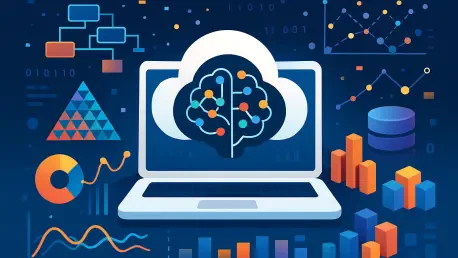In today’s fast-paced business environment, enterprises face the daunting challenge of managing vast volumes of data while striving to extract actionable insights in real time, a task made even more complex by the need to align disparate systems across regions. Consider a multinational corporation struggling to unify sales data, with departments relying on disconnected tools and manual processes, leading to delays and inaccuracies that cost millions annually. This scenario underscores a critical need for a unified, intelligent platform that can streamline analytics and empower decision-making at every level. This how-to guide is designed to help business leaders and data professionals harness the power of Microsoft Fabric, an AI-driven data platform, to revolutionize enterprise analytics. By following the structured steps outlined, readers will learn how to leverage Fabric’s innovative tools to bridge data silos, democratize insights, and drive strategic outcomes with precision and speed.
The purpose of this guide is to provide a clear roadmap for integrating Microsoft Fabric into organizational workflows, ensuring that both technical and non-technical users can unlock the full potential of their data. With an emphasis on AI-powered features, this platform stands out as a transformative solution for addressing modern challenges such as scalability, governance, and real-time decision-making. Understanding and implementing these tools is vital for enterprises aiming to maintain a competitive edge in a data-centric landscape, where timely insights can mean the difference between leading the market or falling behind.
This guide also aims to demystify the complex components of Fabric, breaking them down into actionable steps that can be applied across industries like finance, retail, and manufacturing. By focusing on practical applications, it ensures that readers can see tangible benefits, from simplifying data queries to enabling real-time monitoring. Ultimately, this resource serves as a comprehensive manual for transforming raw data into a strategic asset, fostering collaboration and innovation throughout an organization.
Revolutionizing Enterprise Analytics
Microsoft Fabric represents a groundbreaking shift in how enterprises approach data analytics, offering a full-stack ecosystem that integrates AI to deliver unparalleled insights. For companies grappling with fragmented data systems, this platform provides a unified solution that connects every aspect of data management, from ingestion to visualization. Its evolution into a comprehensive toolset means that businesses can now tackle complex analytics challenges with a single, cohesive system, reducing dependency on multiple, disconnected tools.
A key strength of Fabric lies in its ability to cater to a wide audience, bridging the gap between technical experts and business users who may lack deep analytical skills. By embedding AI-driven functionalities, it empowers employees at all levels to engage with data meaningfully, fostering a culture of informed decision-making. This democratization of data access is not just a feature but a fundamental shift in how organizations operate, ensuring insights are no longer confined to specialized teams.
This section sets the stage for a deeper exploration of Fabric’s core components, such as Data Agents, Copilot Studio, and Real-Time Intelligence. These tools collectively redefine analytics by introducing natural language processing, conversational interfaces, and event-driven capabilities. Readers will discover how each element contributes to a seamless, intelligent data experience, paving the way for the actionable steps outlined later in this guide.
The Evolution and Importance of AI in Data Management
The journey of business intelligence has seen remarkable changes over decades, transitioning from static reports to dynamic, AI-enhanced platforms that address the demands of modern enterprises. Historically, BI tools required significant technical expertise, often limiting their use to dedicated analysts while leaving business stakeholders reliant on intermediaries. Fabric builds on foundational tools like Power BI, incorporating advanced AI to overcome limitations such as data silos and accessibility barriers that plagued earlier systems.
AI’s growing role in data management cannot be overstated, as it enables organizations to process vast datasets with speed and accuracy unattainable through manual methods. With Fabric, AI acts as a catalyst for breaking down complex queries into intuitive interactions, allowing users to focus on outcomes rather than processes. This shift is particularly critical in an era where real-time decisions can dictate market positioning, making AI-driven solutions indispensable for staying agile and responsive.
Moreover, the platform addresses governance and scalability, ensuring that data remains consistent and secure across sprawling enterprise environments. By centralizing metadata and access controls, it mitigates risks associated with fragmented data practices, a challenge that has long hindered comprehensive analytics. This foundation highlights why adopting such advanced tools is essential for enterprises aiming to transform data into a strategic driver of growth and efficiency.
Core Components: Unpacking AI-Driven Tools
Understanding the primary components of Fabric is crucial for leveraging its full potential in enterprise settings. Each tool within this ecosystem serves a distinct purpose, contributing to a holistic approach to data analytics that prioritizes accessibility, integration, and immediacy. This section provides an overview of these elements, preparing readers for the detailed steps to implement them effectively.
The AI-driven features of Fabric are designed to simplify complex processes, ensuring that data insights are not only powerful but also user-friendly. From translating natural language to facilitating real-time analytics, these components address diverse business needs with precision. Below, each tool is explored in depth to illustrate its functionality and relevance in practical scenarios.
By grasping the capabilities of Data Agents, Copilot Studio, and Real-Time Intelligence, organizations can tailor their data strategies to specific challenges and opportunities. These tools collectively form a robust framework that supports everything from ad-hoc queries to mission-critical monitoring, setting the stage for transformative outcomes.
Data Agents: Simplifying Queries with Natural Language
Data Agents stand out as a revolutionary feature within Fabric, enabling users to interact with data through plain language rather than specialized coding skills. This functionality eliminates the need for familiarity with technical languages like DAX or SQL, making business intelligence accessible to a broader audience. For enterprises, this means faster insights without the bottleneck of relying on data specialists for every query.
Bridging the Gap Between Users and Data
A practical application of Data Agents can be seen in scenarios like generating year-over-year sales comparisons with a simple request. A business user can input a query such as “Show me sales growth by region for the past two years,” and the system translates this into a structured output, complete with charts or tables. This seamless interaction empowers employees to explore data independently, driving quicker, more informed decisions without technical hurdles.
Copilot Studio: Conversational BI Across Domains
Copilot Studio extends the power of Data Agents by embedding conversational analytics into familiar platforms like Microsoft Teams. This tool allows users to engage in dynamic, cross-departmental discussions about data, turning routine communications into opportunities for insight. It represents a significant leap toward integrating analytics into everyday business interactions.
Enabling Multi-Agent Validation for Data Accuracy
One compelling use case involves reconciling discrepancies between departments, such as a sales figure mismatch between Finance and Sales teams. By using a prompt like “Compare Q2 sales data across departments,” Copilot Studio queries multiple semantic models and highlights inconsistencies, facilitating audits and ensuring alignment. This capability underscores how conversational BI can streamline complex validation processes with minimal effort.
Real-Time Intelligence: Event-Driven Analytics Hub
Real-Time Intelligence, or RTI, forms the backbone of Fabric’s ability to handle streaming data, providing immediate insights for time-sensitive applications. With tools like Eventstream and Eventhouse, it supports the ingestion, processing, and visualization of data as it flows, catering to modern needs like IoT and fraud detection. This suite is indispensable for organizations requiring instantaneous responses to evolving conditions.
Powering Real-Time Monitoring and Alerts
Consider an IoT telemetry setup where device data is monitored for anomalies like temperature spikes. RTI ingests this information via Eventstream, stores it in Eventhouse for querying, and triggers automated alerts through channels like email or Teams when issues arise. Such real-time monitoring ensures proactive management of critical systems, minimizing downtime and risks.
Building Digital Twins for Advanced Decision-Making
The Digital Twin Builder within RTI enables the creation of virtual representations of physical environments, supporting agentic AI for predictive analytics. By mirroring real-world systems digitally, enterprises can simulate scenarios and optimize operations in real time. This advanced feature enhances decision-making by providing a sandbox for testing strategies before implementation.
Step-by-Step Guide to Implementing Microsoft Fabric
This section offers a detailed, actionable guide to adopting Fabric within an enterprise environment. Each step is crafted to ensure a smooth integration, maximizing the benefits of AI-driven analytics while addressing potential challenges. Follow these numbered instructions to transform data management practices effectively.
Assess Organizational Data Needs and ReadinessBegin by evaluating current data infrastructure, identifying gaps such as silos or scalability issues that Fabric can address. Engage stakeholders from various departments to understand their analytics requirements, ensuring alignment with business goals. A tip here is to document specific pain points, like delayed reporting, to tailor the implementation strategy accordingly.
Set Up a Unified Data Foundation with OneLakeEstablish a centralized data lake using Fabric’s OneLake architecture to consolidate disparate data sources. This step eliminates fragmentation by providing a single repository with consistent semantics and governance. Ensure metadata management is configured to maintain compliance, and test connectivity with existing systems to avoid disruptions during transition.
Deploy Data Agents for Natural Language QueriesActivate Data Agents to enable non-technical users to interact with data effortlessly. Train staff on phrasing queries in plain language, using examples like requesting sales trends or customer metrics. Monitor initial outputs for accuracy, adjusting semantic models if necessary to refine responses, and encourage feedback to improve user adoption.
Integrate Copilot Studio for Conversational AnalyticsRoll out Copilot Studio across communication platforms like Teams, allowing cross-departmental data discussions. Set up multi-agent validation scenarios to resolve discrepancies, ensuring data consistency. Provide guidelines on crafting effective prompts, and periodically review conversation logs to identify recurring issues or training needs.
Implement Real-Time Intelligence for Event-Driven InsightsConfigure RTI tools like Eventstream and Eventhouse to handle streaming data for applications such as IoT monitoring. Define alert thresholds for anomalies, integrating automated responses through preferred channels. Test the system with pilot projects, like tracking equipment performance, to validate real-time capabilities before full-scale deployment.
Establish Governance and Access ControlsEnforce unified governance by setting strict access policies and metadata standards across Fabric’s ecosystem. Regularly audit data usage to ensure compliance with regulatory requirements, and update permissions as roles evolve within the organization. A key tip is to involve legal and IT teams early to preempt privacy or security concerns.
Monitor Performance and Optimize LatencyContinuously track query performance and system latency, particularly during complex operations involving multiple models. Address bottlenecks by optimizing semantic models and prioritizing high-impact datasets for faster processing. Schedule regular performance reviews to adapt to increasing data volumes or user demands over time.
Key Takeaways from Fabric’s AI Ecosystem
This section condenses the essential insights about Fabric’s capabilities into a concise list for quick reference, ensuring readers grasp the core benefits and considerations:
- Data Agents simplify BI by supporting natural language queries, making data accessible to everyone in the organization.
- Copilot Studio enhances collaboration through conversational analytics, integrating insights across diverse business domains.
- Real-Time Intelligence drives event-driven analytics, vital for use cases like fraud detection and live system monitoring.
- Unified governance maintains data consistency and compliance, safeguarding enterprise-wide integrity.
- Challenges such as query latency and data quality necessitate proactive management to sustain optimal performance.
Broader Impacts and Future Trends in AI-Driven Analytics
Fabric’s capabilities align closely with industry trends, particularly the rise of low-code and no-code platforms that empower users without deep technical backgrounds. This shift is reshaping how enterprises approach analytics, reducing reliance on specialized skills while accelerating adoption of data-driven strategies. Sectors like finance, manufacturing, and retail stand to benefit immensely from streamlined insights and enhanced operational agility.
Looking ahead, the demand for real-time insights continues to grow, pushing platforms like Fabric to the forefront of innovation. Applications such as predictive maintenance in industrial settings or instant fraud detection in banking highlight the expanding relevance of event-driven analytics. These use cases demonstrate how immediate data processing can translate into significant cost savings and risk mitigation.
However, challenges like data privacy and query performance remain critical areas of focus. Enterprises must navigate these hurdles by investing in robust security frameworks and optimizing system configurations to handle complex workloads. As AI-driven BI evolves, Fabric’s role as a pioneer positions it to shape the future of data management, adapting to technological advancements and regulatory landscapes.
Final Thoughts on Embracing AI-Driven Insights
Reflecting on the journey through implementing Microsoft Fabric, it becomes evident that the steps taken—from assessing data needs to optimizing performance—laid a strong foundation for transforming enterprise analytics. Each phase, whether setting up a unified data lake or deploying real-time monitoring, contributed to breaking down barriers and fostering a culture of insight-driven decisions. The process highlighted the platform’s capacity to empower users across all levels, turning complex data into actionable strategies.
Looking beyond the initial rollout, organizations should consider investing in ongoing training programs to keep staff adept at using evolving features. Exploring advanced integrations with other enterprise systems could further amplify Fabric’s impact, creating a seamless data ecosystem. Additionally, staying updated on enhancements to address latency or privacy concerns will ensure sustained effectiveness.
As a next step, enterprises are encouraged to pilot new use cases, such as leveraging digital twins for strategic planning, to push the boundaries of what’s possible with AI-driven tools. Collaborating with industry peers to share best practices could also uncover innovative applications, ensuring that the adoption of such platforms continues to drive competitive advantage in an ever-changing business landscape.









